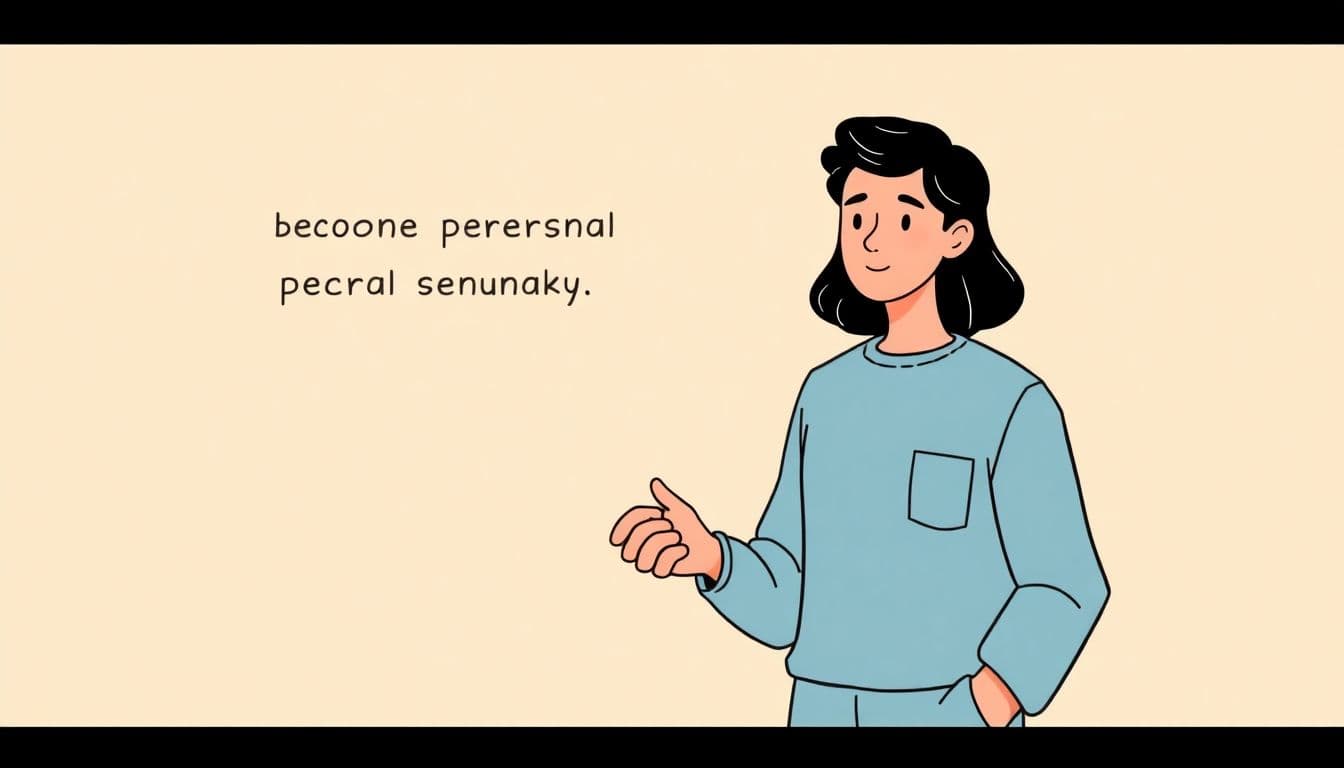Table of Contents
Writing acknowledgements for a book can feel overwhelming. You might wonder whom to include, how to express your gratitude, or whether to keep it formal or casual. It’s a challenge that many writers face, and you’re definitely not alone in this.
If you stick with me, I promise you’ll find a straightforward guide to crafting heartfelt acknowledgements that truly reflect your appreciation for everyone who supported you on your journey. By the end, you’ll know exactly how to structure your acknowledgements and avoid common pitfalls.
We’ll explore the purpose of acknowledgements, who to mention, and how to write in a genuine and professional tone. Let’s make your acknowledgements shine!
Key Takeaways

Understanding Acknowledgements
Acknowledgements serve as a section in a book where the author expresses gratitude to those who contributed to the creation of the work. They serve to recognize the support, guidance, and encouragement received throughout the writing process.
The purpose of acknowledgements is not only to give thanks but also to create a personal connection between the author and the readers. They enrich the narrative by providing insight into the author’s journey and the collaborative nature of writing.
Importance in a Book
Acknowledgements are significant in a book as they validate the contributions of individuals and organizations who played a role in the author’s journey. They offer a moment of reflection and appreciation that can resonate with readers and highlight the supportive network behind the author.
Moreover, these sections can enhance the author’s credibility. When readers see that an author acknowledges mentors, peers, and family, they may feel more inclined to trust the insights and perspectives presented in the book. Acknowledgements can act as a testament to the collaborative and community-driven nature of literary creation.
Who to Acknowledge
Determining who to acknowledge in your book is an essential step, as it ensures you give credit where it’s due. It can be helpful to start with a brainstorm session, listing individuals and groups that have positively impacted your writing journey.
Family and Friends
First and foremost, consider acknowledging family and friends who provided emotional support. Their encouragement during both the highs and lows of the writing process often serves as a foundation for your perseverance.
Personal anecdotes about how they motivated you can add a heartfelt touch, making your acknowledgement resonate better with readers.
Mentors and Teachers
Next, recognize mentors and teachers who influenced your writing and thinking. They are often the ones who provided critical feedback and taught you essential skills that shaped your approach.
Highlighting their contributions adds a layer of respect and gratitude, showing readers the importance of guidance in the pursuit of knowledge and creativity.
Colleagues and Peers
Colleagues and peers, especially those in your writing community, also deserve acknowledgment. They may have offered constructive criticism, shared resources, or simply been sounding boards for your ideas.
Including their names not only manifests gratitude but also builds a sense of camaraderie and connection within the writing community.
Editors and Publishers
Do not overlook editors and publishers who helped refine your manuscript. They play a pivotal role in shaping the final product and can offer valuable insights that enhance the book’s quality.
Acknowledging them showcases professionalism and appreciation for the collaborative effort in bringing your book to life.
Organizations and Influences
Finally, consider any organizations, groups, or influential books and ideas that inspired your work. These acknowledgments can highlight the broader context in which your work exists, providing readers with a richer understanding of your narrative.
Reflecting on these influences can also illuminate your writing philosophy and creative inspirations, adding depth to your book.

Structure of Acknowledgements
The structure of acknowledgements can greatly influence how your gratitude is perceived. A well-organized acknowledgment section allows readers to follow your appreciation logically and emotionally.
Opening Statement
Your opening statement is a chance to set the tone for your acknowledgements. It can be a brief sentence expressing general gratitude towards everyone who supported you throughout your writing journey.
Consider starting with something personal that reflects your feelings, such as acknowledging how meaningful their support was to you.
Group Acknowledgements
After the opening statement, it’s beneficial to group your acknowledgements. This can involve categorizing individuals into broader sections, such as family, mentors, and professionals.
This method provides clarity, allowing readers to comprehend the different influences on your work easily. It’s also a time-saver, as you can express collective gratitude for a group without repeating yourself.
Individual Acknowledgements
Following group acknowledgements, take time to mention significant individuals. Highlighting specific contributions from certain people adds a personal touch and shows your genuine appreciation.
Keep your descriptions concise, but make sure to include why each person’s influence was important to your project.
Closing Remarks
Your closing remarks can serve as a summary of your acknowledgements. You might reiterate your gratitude or mention how the support from these individuals has inspired you for future projects.
This final note should feel warm, reminding readers of the importance of community and collaboration in the writing process.
Writing Style and Tone
The writing style and tone of your acknowledgements should reflect your personality while also maintaining a level of professionalism. It’s essential to strike the right balance between warmth and respect.
Keeping it Sincere and Heartfelt
When writing acknowledgements, sincerity is key. Authenticity resonates with readers, and heartfelt thanks often leave a lasting impression.
Think of how these individuals made you feel and convey your appreciation in a genuine manner.
Using a Personal Voice
Your acknowledgements shouldn’t sound overly formal or stiff; instead, let your personal voice shine through. Use a conversational tone that reflects your character and feelings.
This approach invites readers to connect with you on a deeper level, fostering a sense of intimacy.
Maintaining Professionalism
While it’s important to be personal, maintaining professionalism is vital in your acknowledgements. Avoid overly casual language or slang that may detract from the overall tone of your book.
Strive for a warm yet respectful voice that honors the contributions of those you acknowledge.
Length and Detail
The length and detail of your acknowledgements depend on the number of people you wish to thank and the nature of your book. Finding the right balance is essential to ensure clarity and engagement.
Recommended Length
Acknowledgements can vary in length but typically range from a few paragraphs to a full page. Aim for succinctness while still capturing the essence of what each person contributed.
This ensures that the section remains engaging and does not become overwhelming for readers.
When to be Concise vs. Detailed
Being concise is important when acknowledging groups or individuals whose contributions were more general or less impactful. In such cases, a brief mention suffices.
However, when acknowledging those with significant influence, consider being more detailed to illustrate the depth of their impact. This approach creates a richer tapestry of gratitude.

Final Touches
After you have written your acknowledgements, it’s crucial to give them a final polish to ensure clarity and correctness.
Proofreading your acknowledgements not only helps catch any spelling or grammatical errors but also allows you to refine your expressions of gratitude.
Proofreading for Clarity and Correctness
Read through your acknowledgements several times, focusing on clarity in your sentences.
Ensure that each person’s contributions are articulated clearly, and check for any names or titles that need to be accurate.
Formatting Tips
When it comes to formatting, ensure your acknowledgements fit seamlessly within the layout of your book.
Consider using line breaks between sections or individuals to enhance readability and visual appeal.
Example of Acknowledgements for Inspiration
Look for examples of acknowledgements in other books to inspire your own writing.
Observing how different authors express gratitude can provide you with ideas on tone, structure, and level of detail.
Common Mistakes to Avoid
While writing acknowledgements, there are common pitfalls you should strive to avoid to ensure yours comes across as authentic and structured.
Overlooking Important Contributors
One common mistake is forgetting to mention individuals who made a meaningful impact on your project.
Before finalizing your acknowledgements, make a thorough list of everyone who has helped you along the way to ensure no one is left out.
Being Too Formal or Too Casual
Finding the right tone is key; being too formal can create distance, while being overly casual may undermine the sincerity of your gratitude.
Aim for a balance that reflects your personal style but also shows respect to those you are acknowledging.
Rambling or Being Vague
When you’re grateful, it’s easy to get carried away, but aim to keep your acknowledgements focused and concise.
Vagueness can dilute the depth of your appreciation, so express specific reasons for your thanks clearly and intentionally.
When to Write Acknowledgements
The timing of when to write your acknowledgements is important for capturing the essence of your gratitude in relation to your writing process.
Timing in the Writing Process
Ideally, write your acknowledgements after completing the bulk of your manuscript but before your final edits.
This allows you to reflect on your journey while the experiences are fresh in your mind, ensuring that your gratitude feels immediate and genuine.
Revising Acknowledgements After Feedback
Don’t hesitate to revisit and revise your acknowledgements after receiving feedback on your manuscript.
Input from others can remind you of those you’ve overlooked or impact how you frame your experiences and gratitude.
Conclusion: Key Takeaways for Crafting Acknowledgements
Your acknowledgements provide a wonderful opportunity to express gratitude authentically while enhancing the connection with your readers.
Remember to include family, mentors, and anyone else who supported your journey, and structure your acknowledgements thoughtfully.
Keep your tone sincere, maintain professionalism, and find the right balance in length and detail.
Avoid common mistakes like overlooking contributors and be mindful of your timing in the writing process.
With these guidelines in mind, you can craft meaningful acknowledgements that resonate with readers while honoring those who have been part of your journey.
FAQs
Include a heartfelt opening statement, group acknowledgments, individual contributors, and a closing remark. This structure helps convey your gratitude and highlights the importance of each person or group acknowledged in your work.
Keep the tone sincere and heartfelt while also using a personal voice. It’s essential to maintain professionalism without being overly formal. This balance makes your acknowledgments relatable and genuine.
Avoid overlooking key contributors, being too formal or casual, and rambling. Keep your acknowledgments clear and concise to ensure that your gratitude comes through effectively without losing focus.
Writing acknowledgments is best done towards the end of the writing process, when you have a clear understanding of who to acknowledge. Revise them based on feedback to ensure recognition is thorough and meaningful.



